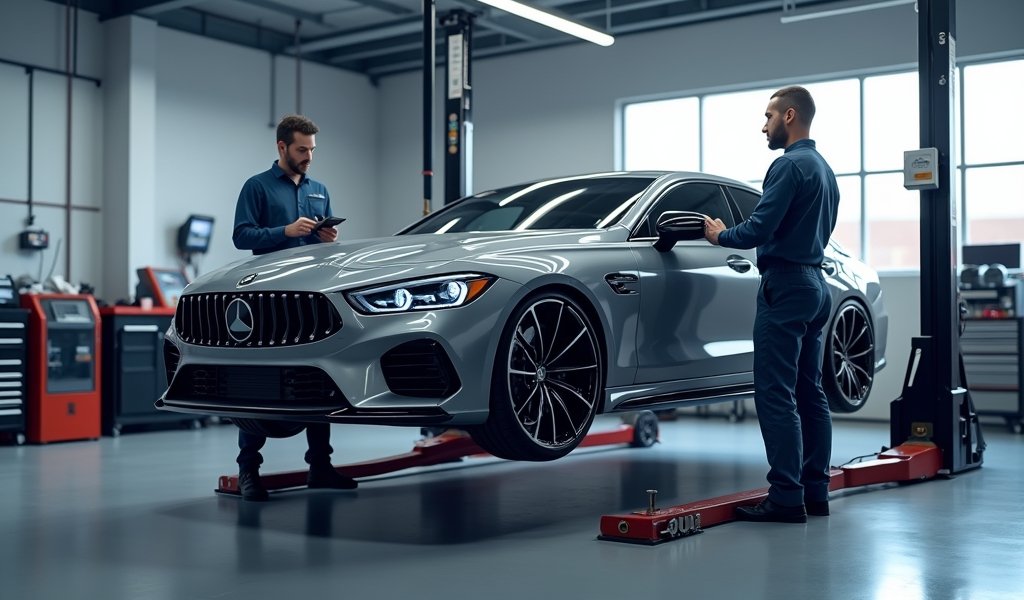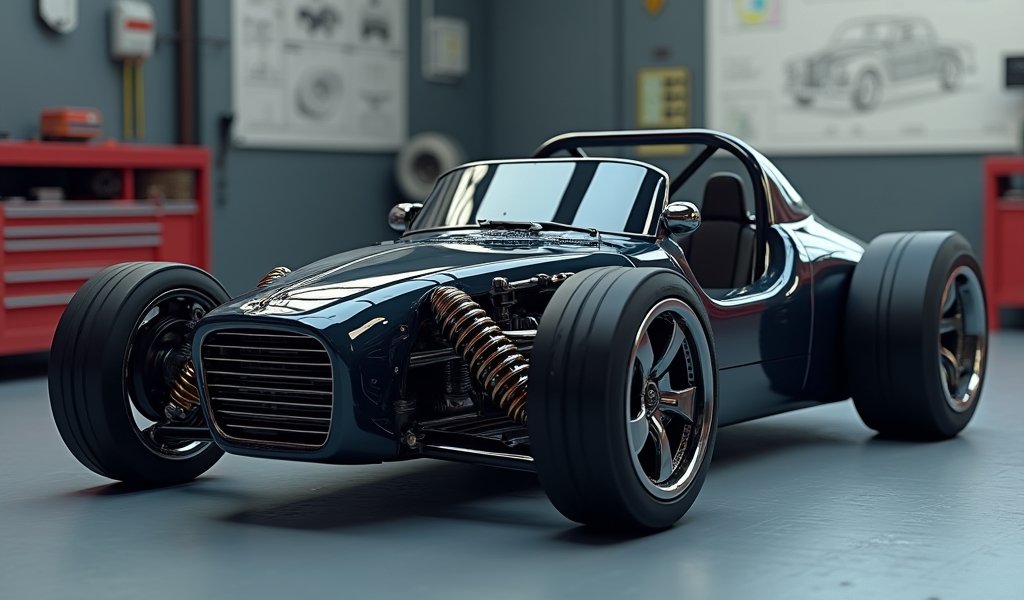Overview
This article provides five essential tips for ensuring proper lowering spring compatibility: knowing vehicle specifications, matching spring rates to driving style, considering existing suspension components, factoring in additional modifications, and consulting professionals. The guide emphasizes that selecting compatible lowering springs is critical for maintaining proper handling, preventing premature component wear, and achieving the desired balance between performance and comfort.
Table of Contents
- Understanding Lowering Spring Compatibility
- Why Compatibility Matters
- Tip 1: Know Your Vehicle Specifications
- Tip 2: Match Spring Rates to Your Driving Style
- Tip 3: Consider Your Existing Suspension Components
- Tip 4: Factor in Additional Modifications
- Tip 5: Consult Professionals and Research Brands
- Common Compatibility Issues
- Installation Considerations
- Conclusion
- Frequently Asked Questions
Understanding Lowering Spring Compatibility
Lowering spring compatibility is something I wish more car enthusiasts understood before diving into suspension mods. I’ve seen too many customers come into my shop with springs that just don’t work with their setup, and let me tell you—it’s not just about looks. When you’re considering lowering springs, compatibility should be your first priority, not how aggressive the stance will look on Instagram.
Throughout my 15 years working as a suspension specialist, I’ve learned that getting the right match between your vehicle and lowering springs makes all the difference between a sweet, responsive ride and a bouncy nightmare that damages your car over time. The right springs can transform your vehicle’s handling while maintaining comfort and safety.
In this guide, I’ll walk you through five essential tips for ensuring your lowering springs are compatible with your vehicle. These aren’t just theoretical suggestions—they’re based on real-world experience working with everything from daily drivers to track-ready performance cars.
Why Compatibility Matters
Before we jump into the tips, let’s talk about why lowering spring compatibility matters so much. When springs don’t match your vehicle’s requirements, you’re asking for trouble. I’m not exaggerating when I say incompatible springs can lead to premature wear on struts and shocks, uneven tire wear, compromised handling, and even safety issues.
The suspension system is a carefully engineered network of components working together. When you change one element—like swapping in lowering springs—you’re altering that entire system. Your car’s suspension was designed with specific spring rates, travel distances, and geometries in mind. Changing these variables means everything else has to compensate.
Furthermore, improper lowering spring compatibility can void warranties, cause rubbing against other components, and create alignment problems that are difficult to correct. Trust me, spending time on compatibility research upfront will save you significant headaches (and money) down the road.

Tip 1: Know Your Vehicle Specifications
Let’s start with the foundation of lowering spring compatibility: knowing your vehicle inside and out. Before you even look at spring options, you need to gather some critical information about your car.
First, identify your exact make, model, year, and trim level. This might seem obvious, but even within the same model year, different trim levels can have completely different suspension setups. A sport package might already come with lowered springs or different dampers compared to the base model.
Next, you’ll need to know your vehicle’s weight. This isn’t just the curb weight from the manual—it’s how your vehicle is currently configured. Have you added heavy aftermarket parts? Removed weight with lighter components? These factors affect how your springs will perform. For precise calculations, consider getting your corner weights measured at a performance shop.
You should also understand your current suspension setup:
- Are you running stock dampers or aftermarket?
- What is your current ride height?
- Do you have any existing suspension modifications?
- What are your stock spring rates (if you can find this information)?
Armed with this information, you can accurately compare potential lowering springs against your specific vehicle needs. Remember, springs that work perfectly on your buddy’s similar-looking car might be completely wrong for yours if there are subtle differences in weight distribution or existing modifications.
Tip 2: Match Spring Rates to Your Driving Style
When it comes to lowering spring compatibility, your driving style is just as important as your vehicle specs. I can’t tell you how many times I’ve had customers complain about their new springs, only to discover they chose race-oriented springs for a daily commuter car.
Spring rates (measured in kg/mm or lbs/in) tell you how stiff the springs are. Higher rates mean stiffer springs, which generally provide better handling but a harsher ride. Lower rates give you more comfort but might allow more body roll in corners. It’s all about finding that sweet spot for how you actually use your car.
For daily drivers, consider springs with rates that are 10-30% higher than stock. This gives you improved handling and a lower stance without sacrificing too much comfort. If you’re splitting time between daily driving and occasional track days, look for progressively wound springs that offer a nice balance—softer initially for comfort, but stiffening up when pushed hard.
Performance enthusiasts who frequent the track should look at springs with rates 30-60% higher than stock, paired with appropriate performance dampers to match. Just remember that every increase in spring rate reduces everyday drivability on rough roads.
Your climate and road conditions matter too. If you live somewhere with terrible roads full of potholes and frost heaves, ultra-stiff springs will make your life miserable and could even damage your vehicle. Be honest about your actual driving environment, not your idealized one.
Tip 3: Consider Your Existing Suspension Components
Lowering springs don’t exist in isolation—they work as part of your entire suspension system. One of the biggest compatibility mistakes I see is people slapping on lowering springs without considering how they’ll interact with their existing components.
Your shocks/struts are particularly critical. Stock dampers are designed for stock springs, and they may not have the valving necessary to control stiffer aftermarket springs. When springs and dampers are mismatched, you’ll typically experience excessive bouncing after hitting bumps (underdamped) or a harsh, overly stiff ride (overdamped).
As a rule of thumb, if you’re lowering more than 1 inch or increasing spring rates by more than 20%, you should strongly consider upgrading your dampers at the same time. Companies like Bilstein, KYB, and Koni make adjustable dampers specifically designed to work with lowering springs.
Beyond dampers, check that your:
- Ball joints have adequate range of motion at the new ride height
- Control arms won’t hit their bump stops prematurely
- Sway bar end links will still function properly (you may need adjustable ones)
- CV axles won’t operate at extreme angles that could cause premature wear
Many manufacturers offer complete lowering kits that include matched springs, dampers, and sometimes even adjustable control arms. While pricier upfront, these kits ensure all components work harmoniously together, which can be cheaper than replacing damaged parts later due to compatibility issues.
Tip 4: Factor in Additional Modifications
Here’s where things get interesting—and where I see many enthusiasts get tripped up with lowering spring compatibility. Your existing or planned modifications can significantly impact what springs will work for your setup.
Wheel and tire combinations are especially important. If you’re running larger wheels or wider tires than stock, you need to be extra cautious about lowering. A spring that drops your car 2 inches might look great with stock wheels, but could cause serious rubbing issues with aftermarket wheels, especially during compression when going over bumps.
Using a wheel fitment calculator can help you visualize potential clearance issues. Remember to account for the dynamic movement of the suspension, not just static measurements.
Weight changes also affect spring compatibility. If you’ve added heavy components (like a bigger intercooler or roll cage) or lightened your car significantly (by removing seats or sound deadening), your spring rates need to be adjusted accordingly. Heavier cars generally need stiffer springs to maintain the same ride height and handling characteristics.
Additionally, consider future modifications. Planning to add a big brake kit? Make sure your chosen lowering springs still provide adequate clearance. Adding power mods? Remember that increased acceleration and braking forces will affect how your suspension behaves under load.

Tip 5: Consult Professionals and Research Brands
I can’t stress this enough: when it comes to lowering spring compatibility, don’t just go by what looks cool or what’s cheapest. Take the time to consult with professionals and research reputable brands.
Start by reaching out to manufacturer technical support. Companies like Eibach, H&R, and KW have technical teams that can provide specific advice for your vehicle and usage. They’ve likely seen your exact setup before and can steer you away from common pitfalls.
Vehicle-specific forums and communities are goldmines of real-world experience. Search for threads where people with your exact model discuss their experiences with different springs. Pay attention to those who have similar modifications and driving habits to yours.
When choosing brands, understand that quality matters enormously with suspension components. Premium brands may cost more, but they typically:
- Use better materials that resist sagging over time
- Provide more accurate spring rates that match their specifications
- Undergo more extensive testing for your specific vehicle
- Offer better customer support when questions arise
I’m not saying budget options never work, but in my shop, I see far more issues with cheaper springs than premium ones. The difference in price between basic and quality springs is usually a few hundred dollars—a small price compared to the cost of fixing alignment issues, replacing worn components, or dealing with a car that rides terribly.
Common Compatibility Issues
Now that we’ve covered the essential tips, let’s talk about some common compatibility issues I’ve encountered over the years. Being aware of these potential problems can help you avoid them.
Bottoming out is probably the most frequent complaint I hear. This happens when the suspension compresses fully and hits the bump stops too frequently, causing a harsh impact. It’s typically caused by springs that lower the vehicle too much for its design or usage. If you frequently carry heavy loads or drive on rough roads, a moderate drop (0.75-1.25 inches) is usually more appropriate than an aggressive one (1.5-2+ inches).
Geometry changes are another major concern. Lowering alters your suspension geometry, potentially causing increased camber (where the top of the tire tilts inward). While some negative camber can improve cornering, excessive camber leads to uneven tire wear and reduced straight-line stability. For drops greater than 1.5 inches, proper wheel alignment becomes crucial, and you might need adjustable control arms to restore proper geometry.
Preload issues occur when springs are installed incorrectly or aren’t matched to your vehicle’s weight. This can cause uneven ride height from side to side or front to back. Quality springs account for factory weight distribution, but modifications that significantly change weight can throw this balance off.
Spring noise—usually in the form of squeaking or creaking—often indicates compatibility problems. This typically happens when the spring doesn’t seat properly in the perch or when helper springs aren’t installed correctly. Using proper isolation components and ensuring correct installation can prevent these annoying sounds.
Installation Considerations
Even the most compatible lowering springs won’t perform properly if they’re installed incorrectly. Installation isn’t just about swapping parts—it’s about preserving the integrity of your entire suspension system.
Always inspect your existing components before installing new springs. This is the perfect time to check for worn strut mounts, bad ball joints, or damaged bushings. These components undergo additional stress with lowering springs, so addressing any wear now will save you headaches later.
Many mechanics recommend replacing your shocks/struts when installing lowering springs, even if they seem fine. That’s because lowering springs typically increase the compression frequency of your suspension, putting more demand on your dampers. At minimum, have a professional evaluate your current dampers’ condition.
After installation, a professional alignment is non-negotiable. Lowering changes your suspension geometry, and proper alignment is essential to prevent uneven tire wear and ensure predictable handling. Don’t skip this step—it’s worth every penny.
Also, be prepared for a break-in period. New springs need time to settle, and your ride height may drop an additional 0.25-0.5 inches after a few hundred miles. Don’t panic if your car sits slightly higher right after installation—this is normal. Give the springs at least 500 miles before making any judgments about the final ride height.
Conclusion
Lowering spring compatibility isn’t just a technical detail—it’s the foundation of a successful suspension upgrade. By following these five tips—knowing your vehicle specs, matching springs to your driving style, considering existing components, factoring in other modifications, and consulting professionals—you’ll set yourself up for success.
Remember that there’s no one-size-fits-all solution when it comes to lowering springs. What works perfectly for one vehicle might be completely wrong for another, even if they’re the same model. Take your time, do your research, and be honest about how you actually use your vehicle.
In my years working on suspensions, I’ve found that the most satisfied customers are those who prioritized compatibility over extreme drops or the lowest price. They ended up with cars that not only looked better but actually performed better too—with handling improvements they could enjoy every day without sacrificing reliability or comfort.
Your car’s suspension is a complex, interdependent system. Treat it with respect by choosing compatible components, and it will reward you with improved handling, a better stance, and thousands of trouble-free miles. And if you’re ever in doubt, remember that consulting with a suspension specialist before making a purchase is always cheaper than fixing problems afterward!
Frequently Asked Questions
How much can I safely lower my car?
For most vehicles, a drop of 1-1.5 inches maintains good functionality while improving appearance. Anything beyond 2 inches typically requires additional modifications to maintain proper suspension geometry.
Do I need to replace my shocks when installing lowering springs?
It’s highly recommended, especially if lowering more than 1 inch or if your current shocks have significant mileage. Stock shocks aren’t valved to handle the increased spring rates and shorter travel of lowering springs.
Will lowering springs void my car’s warranty?
Manufacturers can only void warranty coverage for parts directly affected by your modification under the Magnuson-Moss Warranty Act. However, suspension-related issues may not be covered after installing lowering springs.
How long do lowering springs last?
Quality lowering springs from reputable manufacturers typically last 5-7 years under normal driving conditions. Budget springs may sag and lose their rate much sooner, sometimes within 1-2 years.
Can I install lowering springs myself?
While technically possible, it requires specialized tools like spring compressors that can be dangerous without proper experience. Professional installation ensures safety and proper preloading of the springs.


Pingback: Camber Adjustment Bolt Kit: 5 Pro Tips - knowsyourcar.com